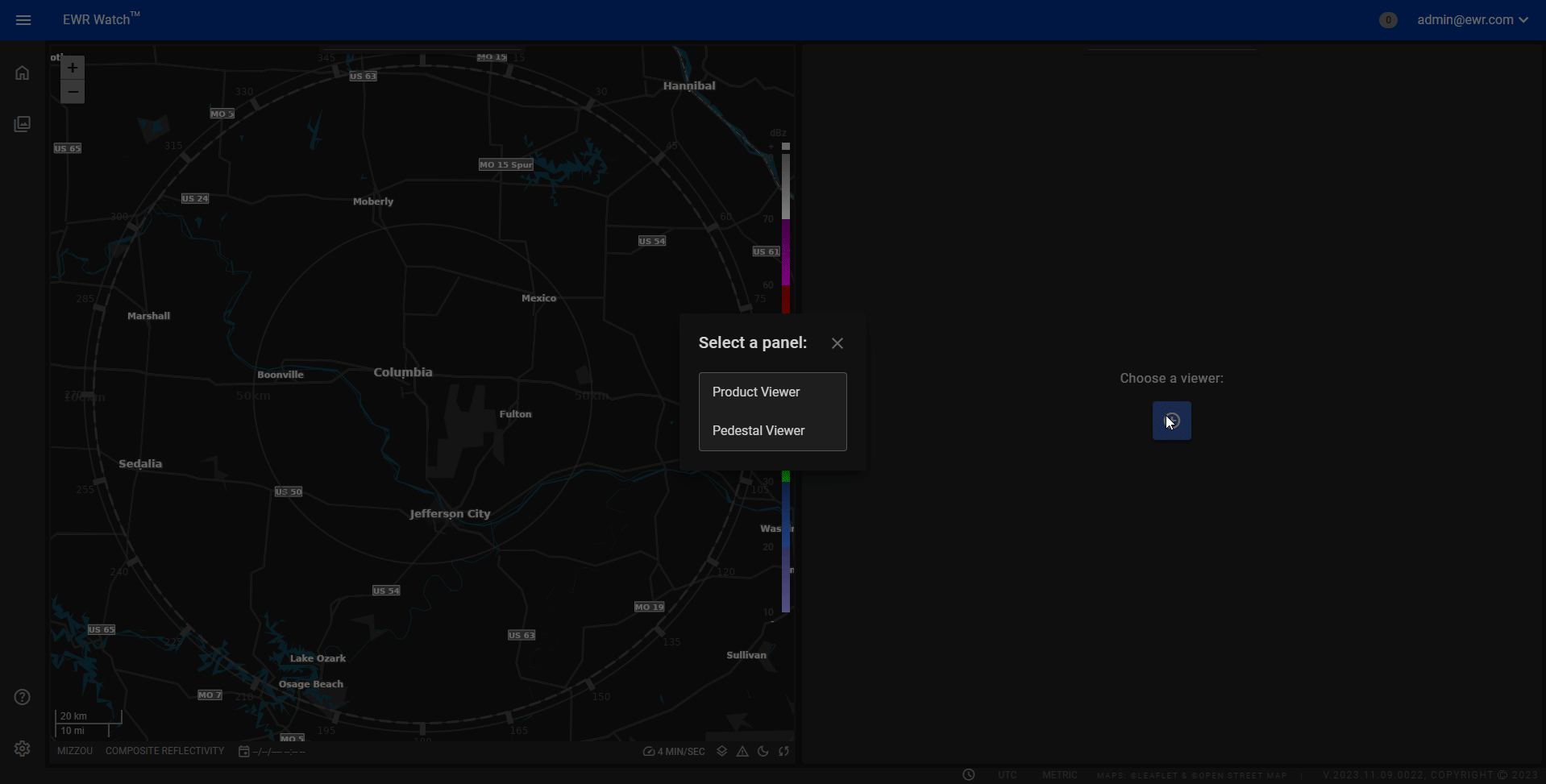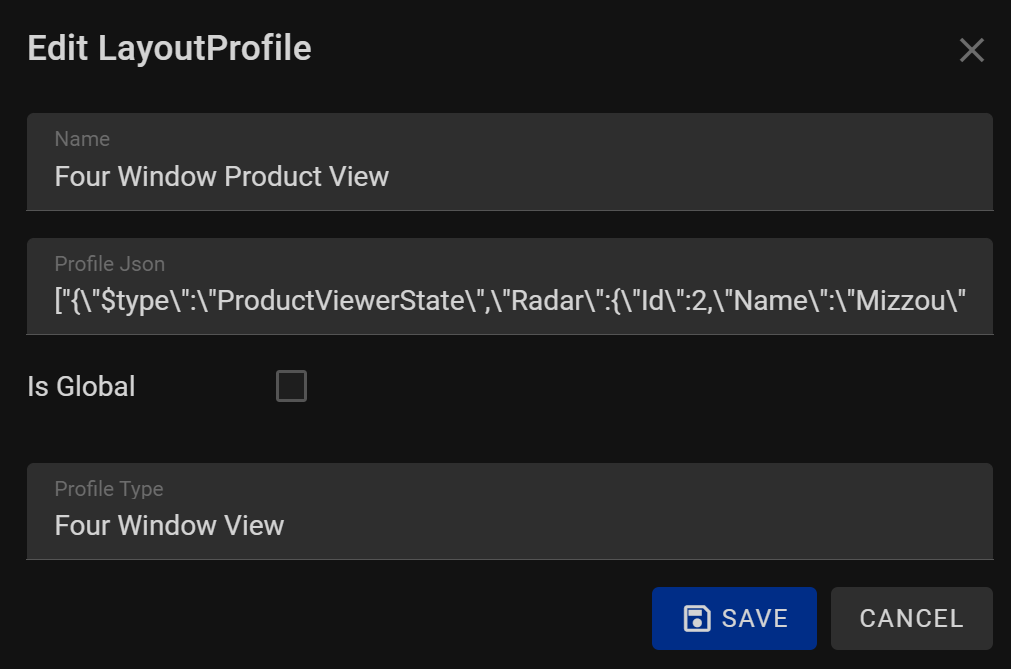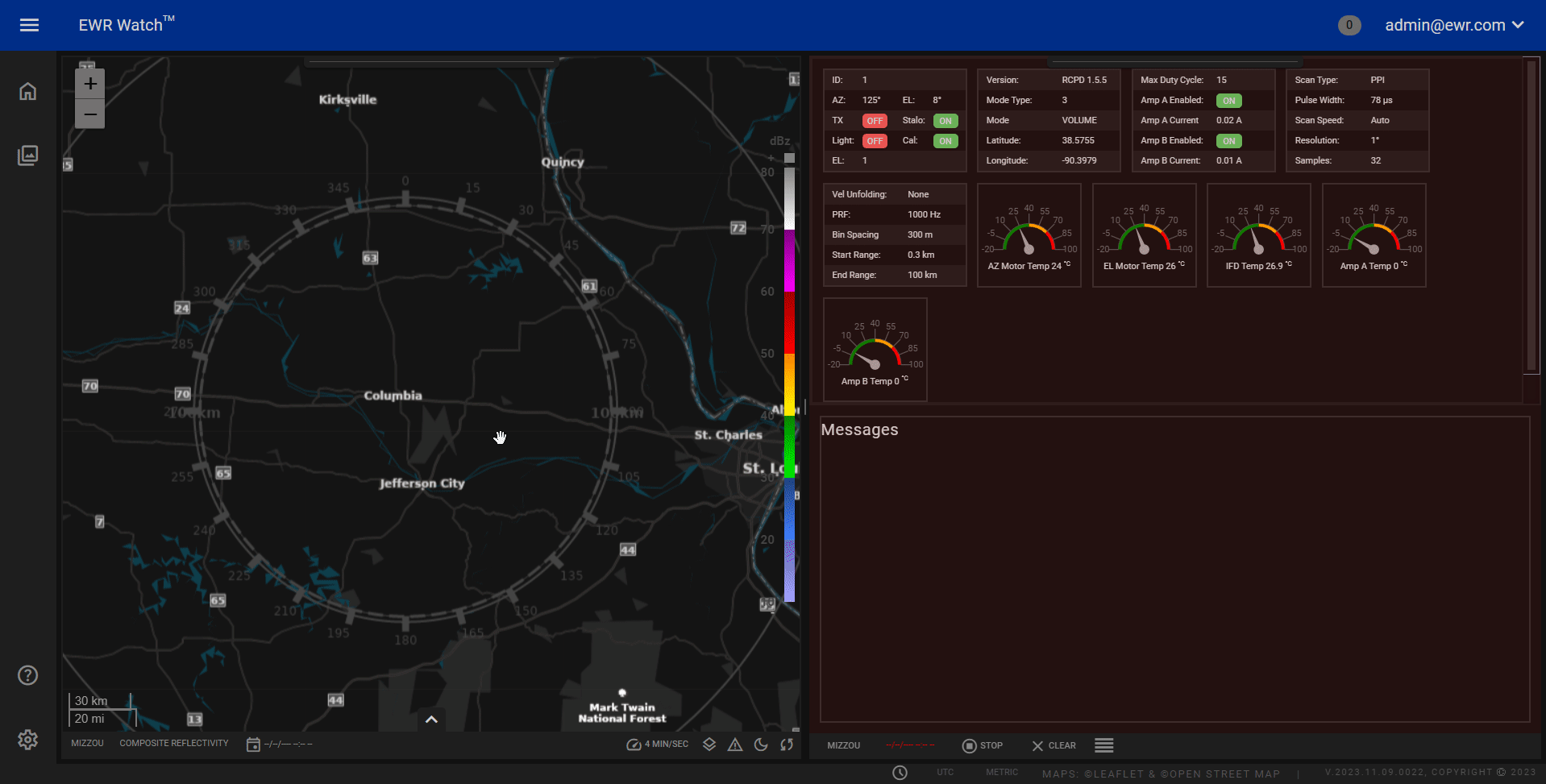Layout Profiles
The Layout Profiles Page provides a comprehensive view of all available layout profiles in a structured and user-friendly grid format. This page serves as a centralized hub for managing layout configurations, making it effortless for users to navigate and manipulate their layout settings. The grid is designed with five key columns, each offering valuable information to enhance the user experience.
Data Grid¶

With this organized and informative grid layout, users can effortlessly browse, compare, and manipulate layout profiles, enabling them to optimize their application's interface according to their preferences and workflow requirements. This intuitive design enhances productivity and simplifies the process of managing layout configurations, making it an indispensable tool within the program's functionality. Below is a detailed description of the columns.
Columns¶
-
Name
The Name column displays the unique identifier for each layout profile, making it easy for users to quickly identify and select the desired profile. Descriptive and intuitive names facilitate effortless recognition and selection. -
Profile JSON
The Profile JSON column showcases the JSON representation of the layout profile. This detailed view allows users to understand the underlying structure and properties of the selected profile, aiding in fine-tuning and customization according to specific requirements. -
Is Global
The Is Global column indicates whether a particular layout profile is set as global or specific to individual instances. Global profiles apply universally across the entire system, ensuring consistency, while non-global profiles offer flexibility for unique layouts tailored to specific contexts. -
Profile Type
The Profile Type column specifies the type or category of each layout profile. Whether it's a default template, user-defined custom layout, or a specialized design for particular functionalities, this column provides valuable context, aiding users in choosing the right profile for their needs. -
Actions
The Actions column offers a set of intuitive and accessible options for users to interact with the layout profiles. Such as deleting, and applying profiles. These actions empower users to modify existing profiles or create new ones seamlessly, ensuring a hassle-free experience when managing their layout configurations.
Actions¶
- Delete
Clicking Delete removes the respective user from the system. This action is useful when retiring Users accounts that are inactive and decluttering the interface. Users can confidently remove redundant or obsolete user profiles, streamlining the application's management process.
Adding¶

Adding a layout profile in our program is a straightforward process that allows users to customize their workspace according to their preferences. Here's a step-by-step guide to adding a new layout profile:
-
Accessing Layout Profiles
Start from the home screen of the program. When configuring the number of panels and selecting the desired layout, navigate to the top of the panel interface. Here, you will find the Layout Profiles button. -
Selecting "Layout Profiles"
Click on the Layout Profiles button to access the profile management interface. In this window, you have the option to choose an existing layout profile or create a new one. -
Creating a New Layout Profile
To add a new layout profile, select the Add Profile option. You will be prompted to provide the following details:Name
Enter a unique and descriptive name for the new layout profile. The name should clearly represent the purpose or configuration of the profile, making it easy to identify later.Profile Type
Specify the type or category of the layout profile. Choose an appropriate category that aligns with the purpose of the profile, such as default, custom, or specialized layouts for specific functionalities.Global Profile (Optional)
There is an optional checkbox for "Is Global." If checked, the layout profile will be applied universally across all instances in the program. Global profiles ensure consistency throughout the entire system. If left unchecked, the profile will be specific to the current instance, allowing for more personalized configurations. -
Saving the Layout Profile
After entering the required details and configuring the profile type and global settings, click the Save button to confirm and save your new layout profile. The program will now recognize and apply this profile according to the specified settings, enhancing your user experience by tailoring the workspace layout to your needs.
Editing¶

Editing a layout profile is a simple and intuitive process, empowering users to refine their workspace configurations according to changing needs or preferences. To edit a layout profile, double-click on the profile you want to modify or use our quick edit feature when selecting layout profiles select the settings wheel. This action will open the Edit Profile dialogue box, providing access to the profile's details for editing. You are allowed to edit the following:
-
Name
Update the name of the layout profile to reflect any changes or to provide a more descriptive label. The name should clearly represent the purpose or configuration of the profile for easy identification. -
Profile JSON
Edit the JSON representation of the layout profile if necessary. This option allows advanced users to fine-tune the layout properties directly, ensuring precise customization according to specific requirements. -
Is Global
Adjust the global setting by checking or unchecking the "Is Global" checkbox. If checked, the layout profile will be applied universally across all instances in the program, ensuring consistency. If left unchecked, the profile will be specific to the current instance. -
Profile Type
Modify the profile type to categorize the layout profile appropriately. Choose the most relevant category such as default, custom, or specialized layouts to align with the profile's purpose.
Saving Changes
After making the desired edits, click the Save button within the dialogue box to confirm the changes. The program will update the layout profile with the edited details, ensuring that the workspace reflects the updated configuration.
Quick Edit

The Quick Edit feature in our program offers users a convenient and efficient way to enhance their workflow by swiftly modifying layout profile names when panels are swapped out or the layout changed. This tool provides several key benefits to streamline the user experience.
Exporting¶
Allows users to export the current Profile Layout list in two formats: CSV (Comma-Separated Values) and Excel. This feature facilitates easy data sharing and analysis by providing options suitable for various applications.